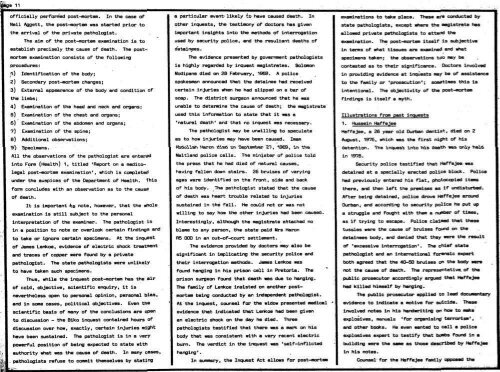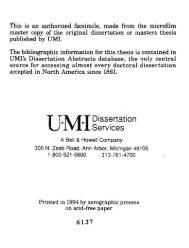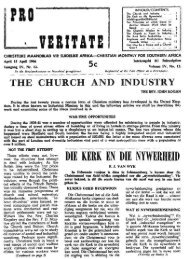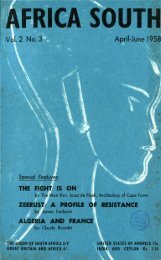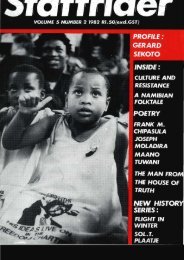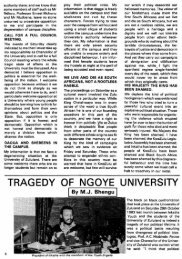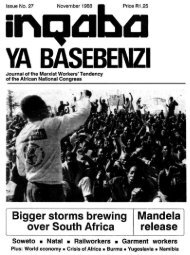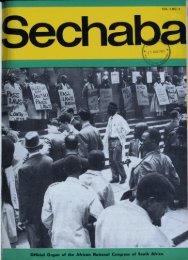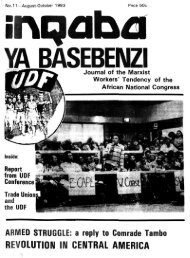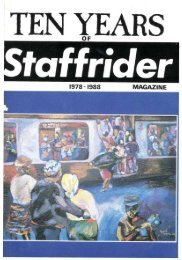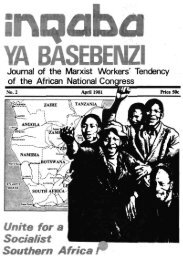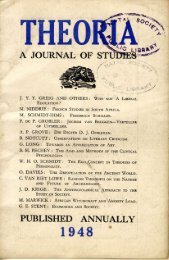Create successful ePaper yourself
Turn your PDF publications into a flip-book with our unique Google optimized e-Paper software.
peg* 11<br />
officially performed post-mortem. In the cetie of<br />
Hell Aggett, the post-mortem was started prior to<br />
the arrival of the private pathologist.<br />
The aim of the post-mortem examination la to<br />
establish precisely the causa of death. The post"<br />
mortem examination consists of the following<br />
procedures i<br />
1) Identification of the body;<br />
2) Secondary post-mortem changes;<br />
3) External appearance of the body and condition of<br />
the llmbe;<br />
4) Examination of the head and neck and organs;<br />
5) Examination of the chest and organs;<br />
6) Examination of the abdomen and organs;<br />
7) Examination of the spina;<br />
8) Additional observations;<br />
9) Specimens. •<br />
All the observations of the pathologist are entered<br />
into Form (Health) 1, titled 'Report on a medico<br />
legal postHsortem examination', which is completed<br />
under the auspices of the Department of Health. This<br />
form concludes with an observation as to the cous*<br />
of death.<br />
It Is important +o note, however, that the whole<br />
examination is still subject to the personal<br />
Interpretation of the examiner. The pathologist is<br />
In a position to note or overlook certain findings and<br />
to take or ignore certain specimen*. At the inquwst<br />
of Jamms Lenkoe, evidence of electric shock treatment<br />
and traces of copper war* found by a private<br />
pathologist. The atate pathologists were unlikely<br />
to have taken such specimens.<br />
Thus, while the inquest post-mortem has the sir<br />
of cold, objective, scientific enquiry. It is<br />
nevertheless open to personal opinion, personal bias,<br />
end in some cases, polltlcel objectives. Even the<br />
scientific basis of many of the conclusions are open<br />
to discussion - the Blko inquest contained hours o f<br />
discussion over how, exactly, certain Injuries might<br />
have bean sustained. The pethologlst is in a very<br />
powerful position of being expected to atate with<br />
euthorlty what was the cause of death* In many cases,<br />
pathologists refuse to commit themselves by stating<br />
•<br />
a particular event likely to have caused death. In<br />
other inquests, the testimony of doctors has given<br />
important insights into the methods of interrogation<br />
used by security police, end the resultant deaths of<br />
detainees.<br />
The evidence presented by government pathologists<br />
is highly regarded by inquest magistrates. Solomon<br />
modipane died on 28 February, T9G9. A police<br />
spokesmen announced thet the detainee had received<br />
certain injuries when ha had slipped on a bar of<br />
soap. The district surgeon announced thet he was<br />
unable to determine the cause of deeth; the magistrate<br />
used this information to state that it was a<br />
•natural death* and that no inquest was necessary.<br />
The pathologist may be unwilling to speculate<br />
es to how injuries may have been caused. Imam<br />
Abdullah Hsron died on September 27. 1969, In the<br />
Maltland police cells. The minister of police told<br />
the press that ha had died of natural causes,<br />
heving fallen down stairs- 26 bruises of varying<br />
agas were identified on the front, side and back<br />
of his body. The pathologist stated thet the cause<br />
of death was heart trouble related to injuries<br />
sustained in the fall. Ha could not or was not<br />
willing to say how the other injuries had been caused.<br />
Interestingly, although the magistrate attached no<br />
blame to any person, the state paid Mrs Heron<br />
R5 000 In an out-of-court settlement.<br />
The evidence provided by doctors may also be<br />
significant in implicating tha security police and<br />
their interrogation methods. James Lenkoe was<br />
found hanging in his prison call in Pretoria. The<br />
prison surgeon found that death was due to hanging.<br />
The family of Lenkoe lnalstad on another post*<br />
mortmw being conducted by en independent pathologist.<br />
At the inquest, counsel for the widow presented medical<br />
evidence that indicated that Lenkoe had been given<br />
an electric shock on the day he died. Three<br />
pathologists testified that there wee a mark on hie<br />
body thet was consistent with a very recent electric<br />
burn. The verdict in the Inquest was 'eelf-inflicted<br />
hanging*.<br />
In summary, tha Inquest Act allows for post-ewrtem<br />
examinations to take place. These af* conducted by<br />
stete pethologiets, except where the magistrate haa<br />
allowed private pathologists to attend tha<br />
examination. The post-mortem Itself is subjective<br />
in tanas of what tissues are examined and what<br />
specimens taken; the observations tcx> may ba<br />
contested as to their signiflcanca. Doctors Involved<br />
In providing evidence et inquests may ba of asslstanca<br />
to the family or 'prosecution*; somwtimas this is<br />
intentional. The objectivity of the poet-mortem<br />
findings is itself e myth.<br />
Illustrations from pest Inquests<br />
1. Hussein Haffajeo<br />
Hsffejee, a 26 year old Durban dentist, died on 2<br />
August, 1976, which was tha first night of his<br />
detention. The inquest into his death eas only held<br />
in 1976.<br />
Security police testified that Heffejea was<br />
detained et e specielly erected police block. Police<br />
had previously entered hie flat, photocopied items<br />
there, end then left the premises as If undisturbed.<br />
After being detained, police drova Hsffejee around<br />
Durban, and according to security police he put up<br />
a struggle and fought with them a nusber of times^<br />
es if trying to escape. Police claimed that these<br />
tussles ware the causa of bruises found on the<br />
detainees body, and denied thet they ware the reeult<br />
of 'excessive interrogation'. Tha chief etata<br />
pathologist and an International for*nelc export<br />
both agreed thet the 40-50 bruises on the body were<br />
not the causa of death. The representative, of the<br />
public prosecutor accordingly argued that Heffejea<br />
had killed himself by hanging.<br />
The public prosecutor applied to lead documentary<br />
evidence to lndicata a motive for suicide. These<br />
Involved notee In his handwriting on hoe to woke<br />
exploelveet manuals 'for organising tarrorism',<br />
and other books. He even wanted to call e police<br />
exploalvas expert to testify that bombs found in a<br />
building were tha same aa thosa described by hoffejea<br />
in his notes.<br />
Counsel for the Hsffejee family opposed tha


